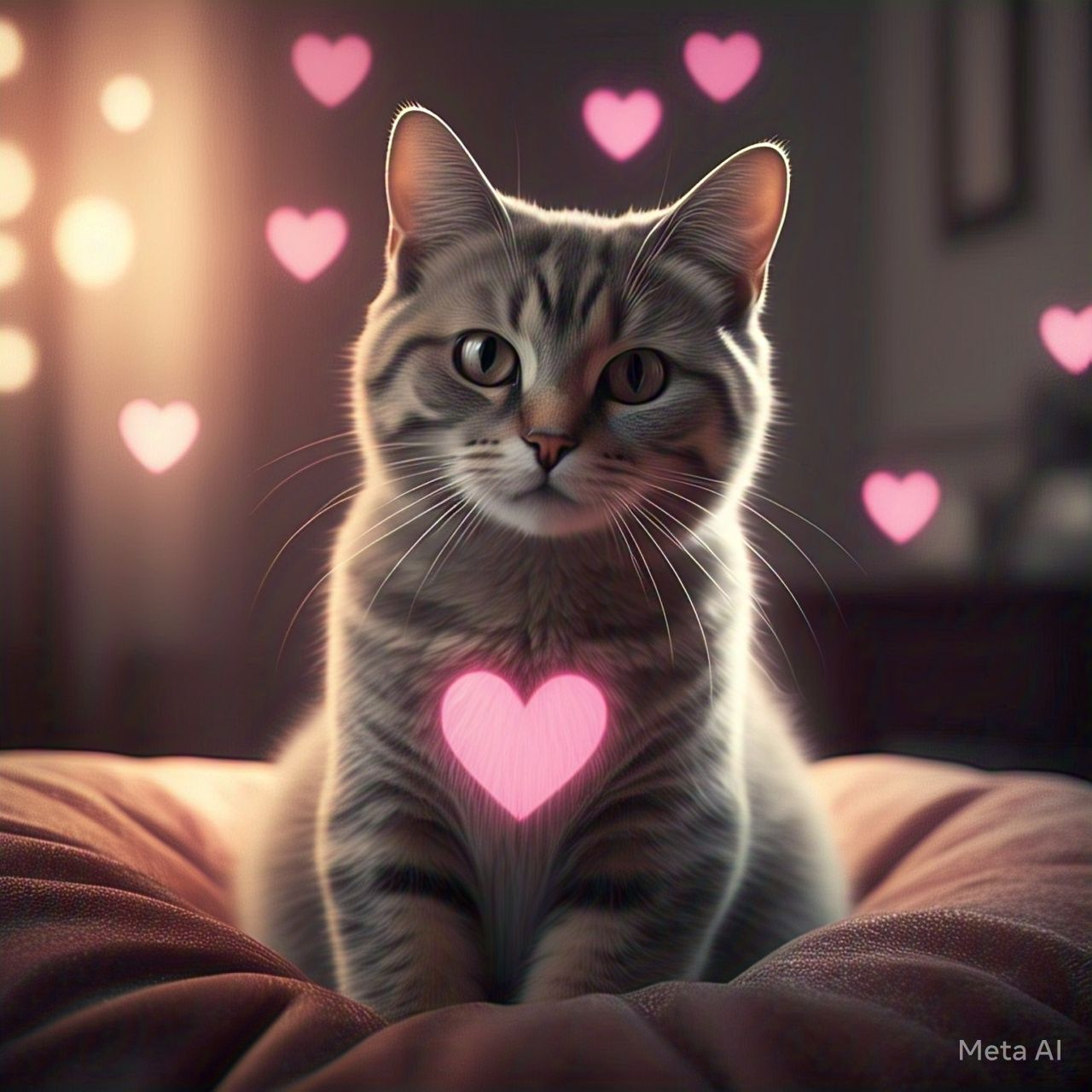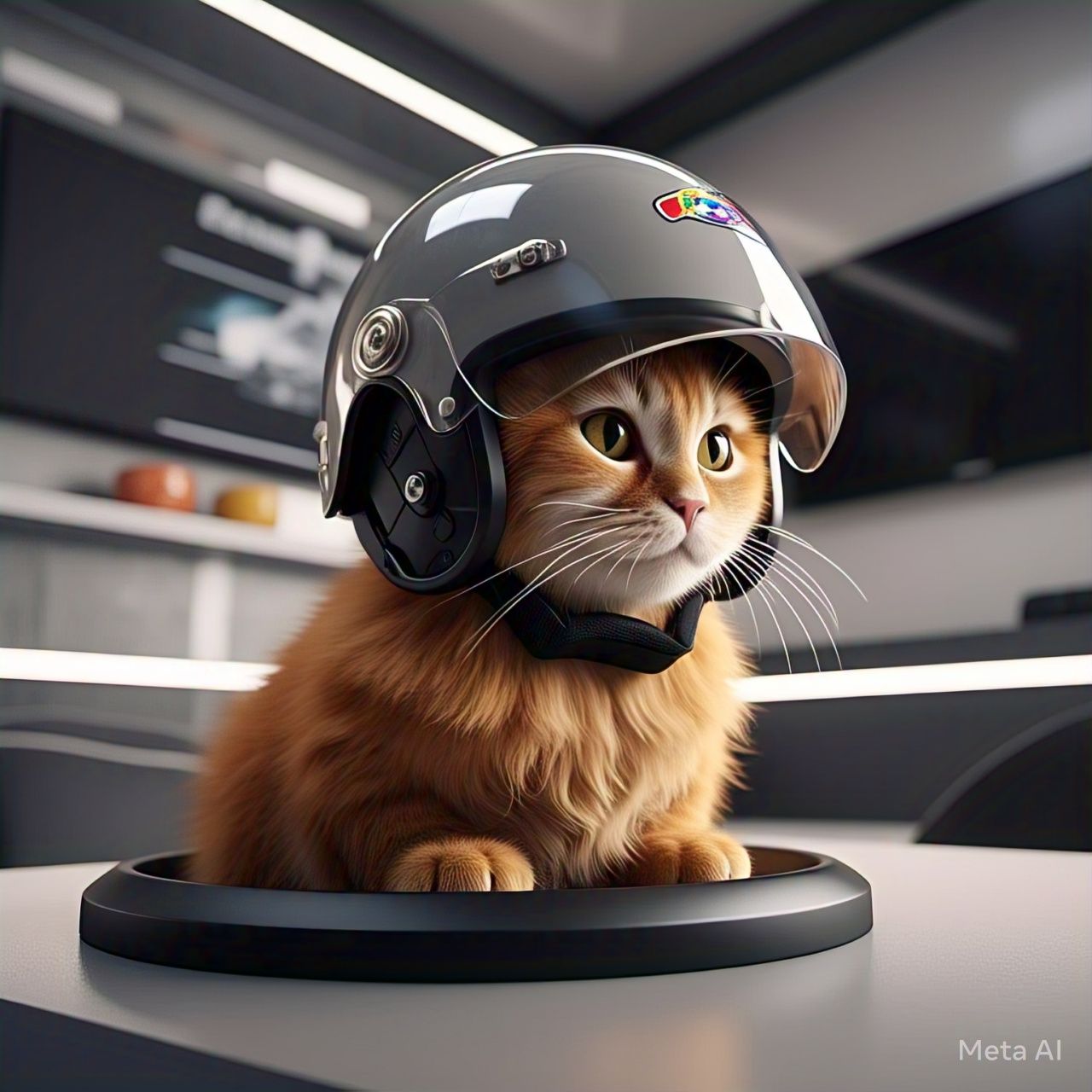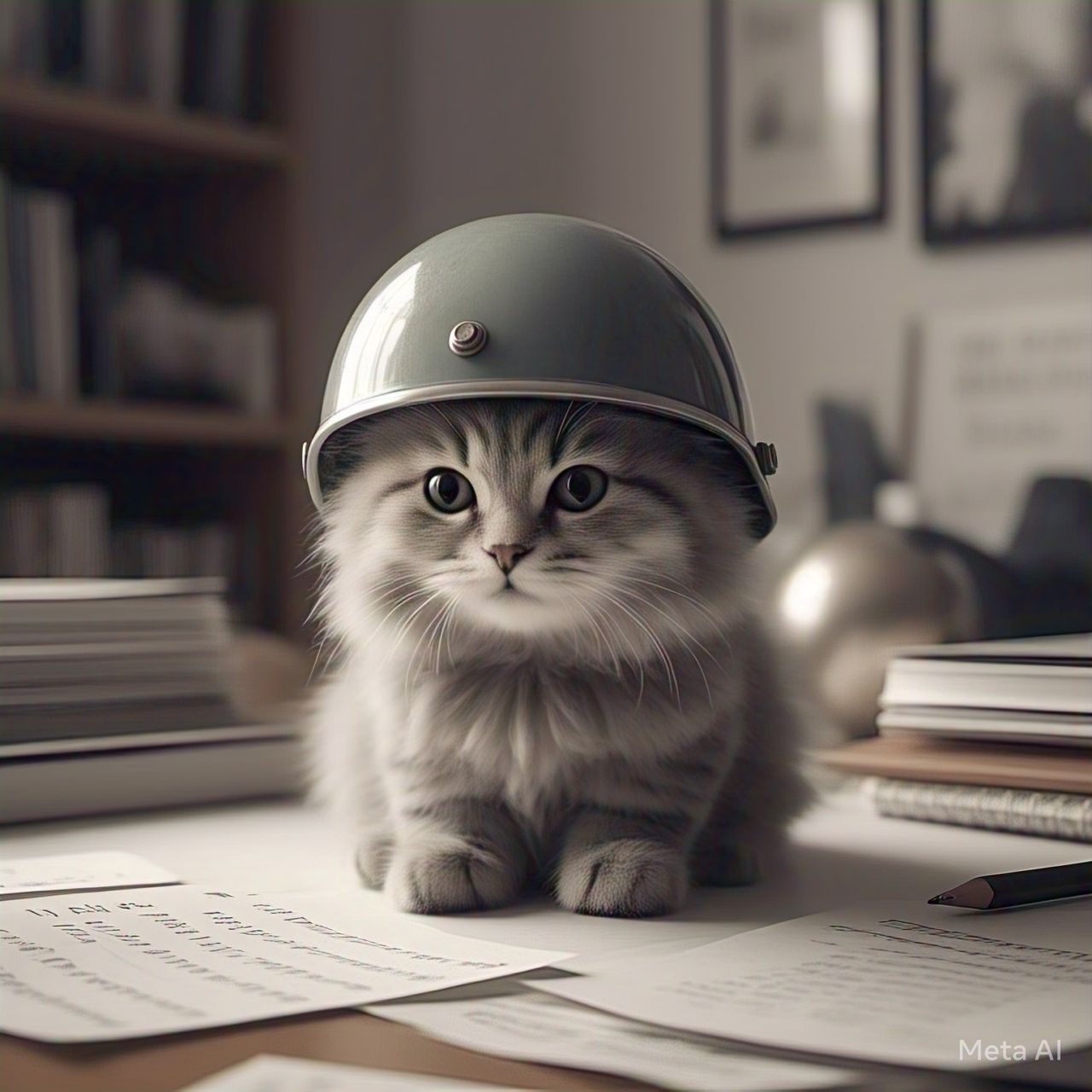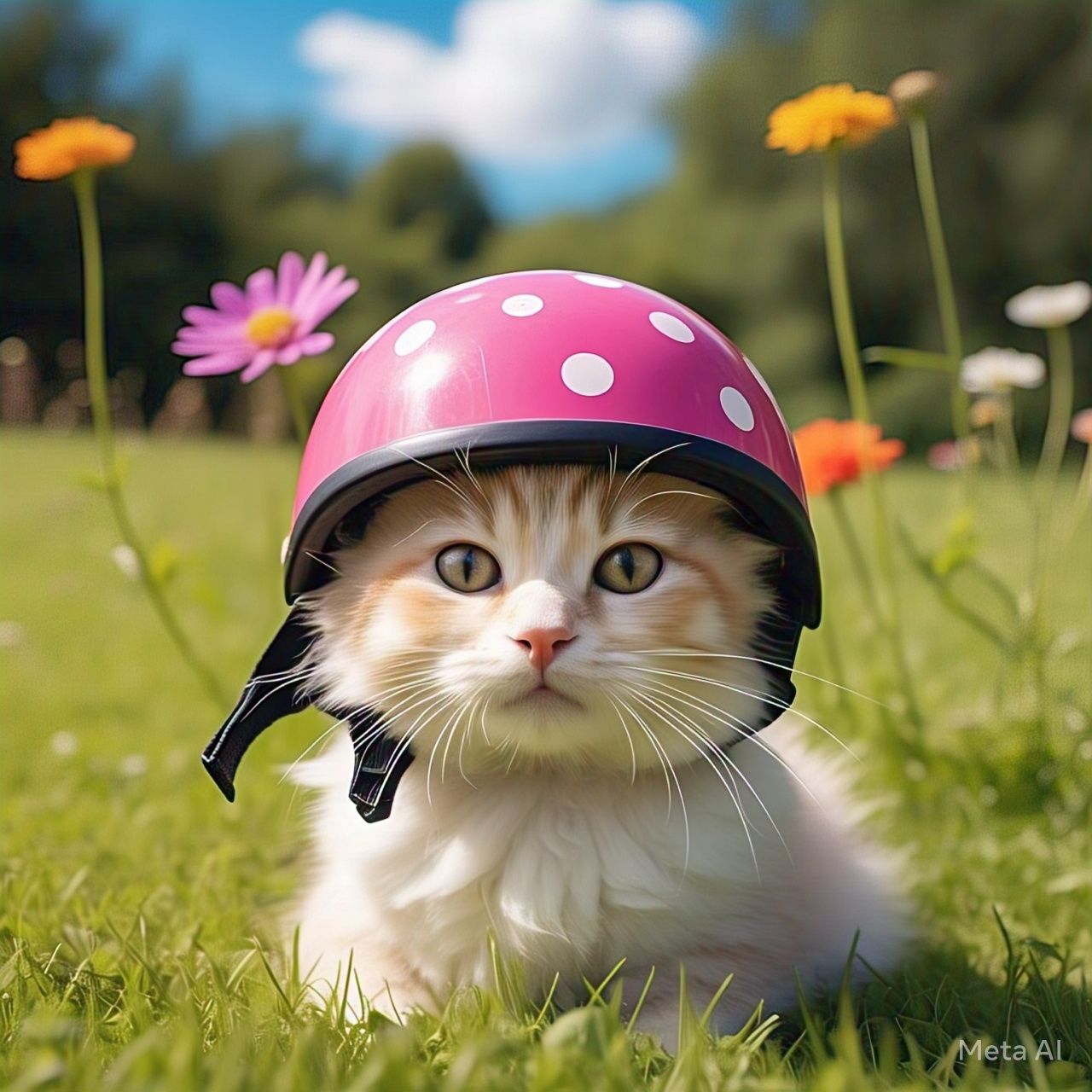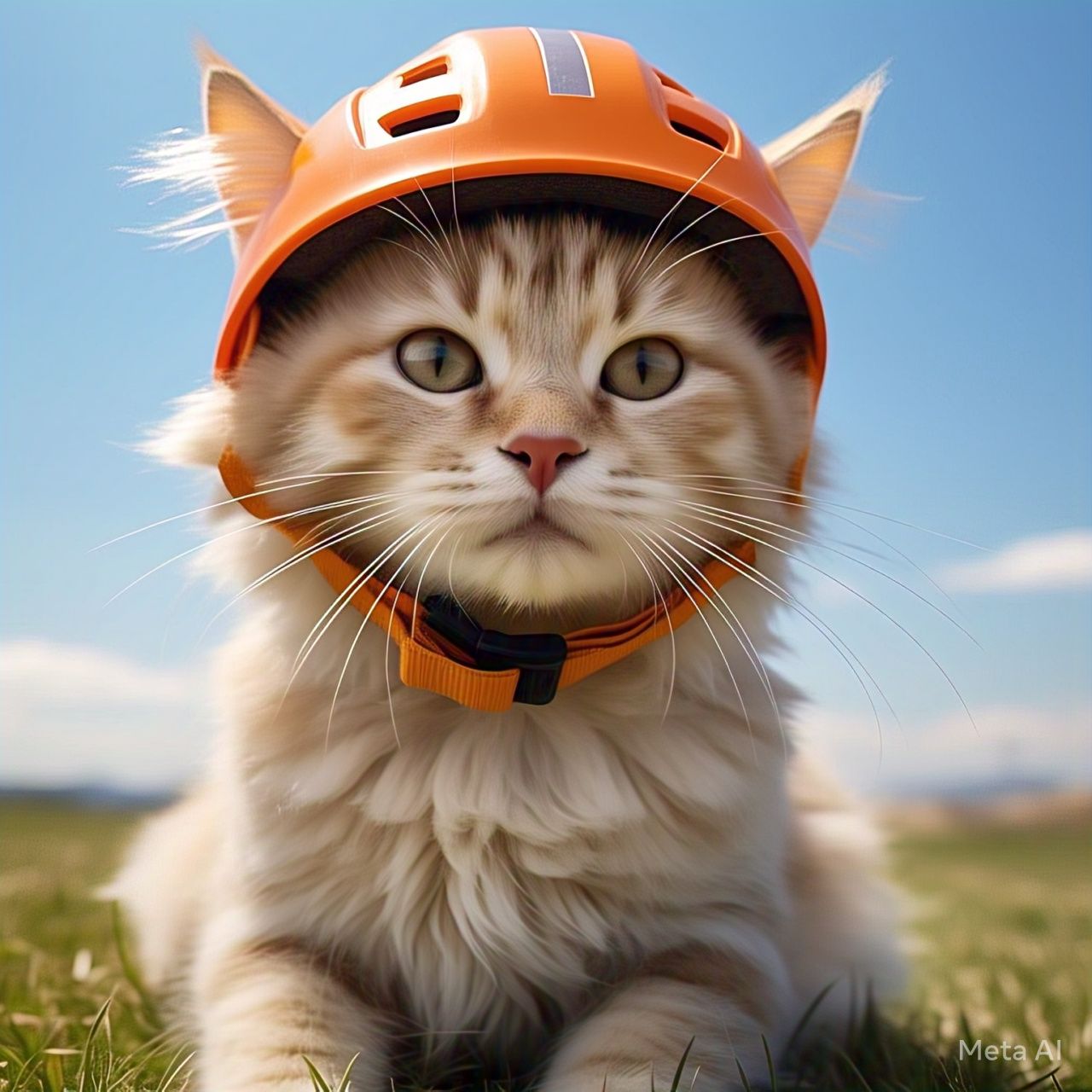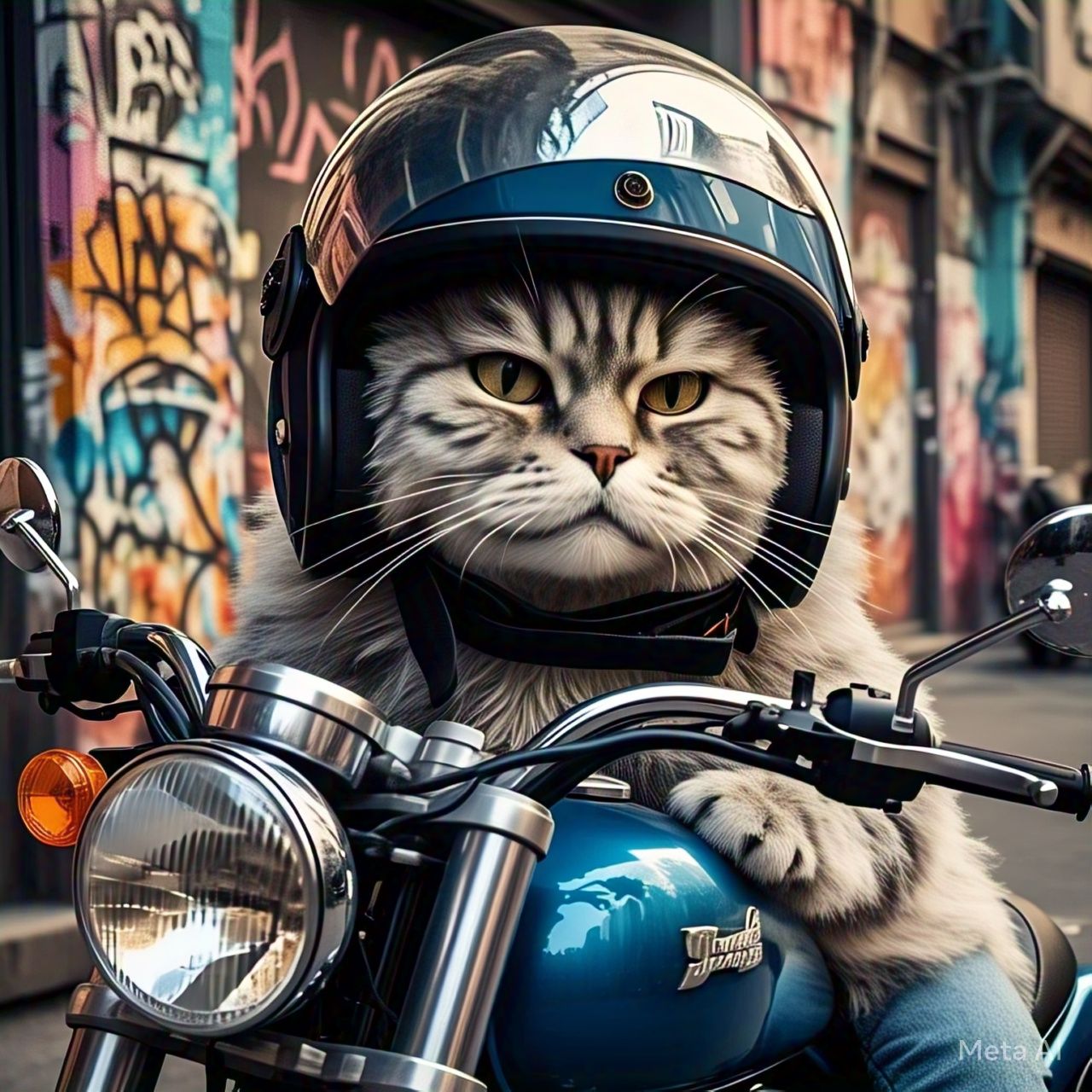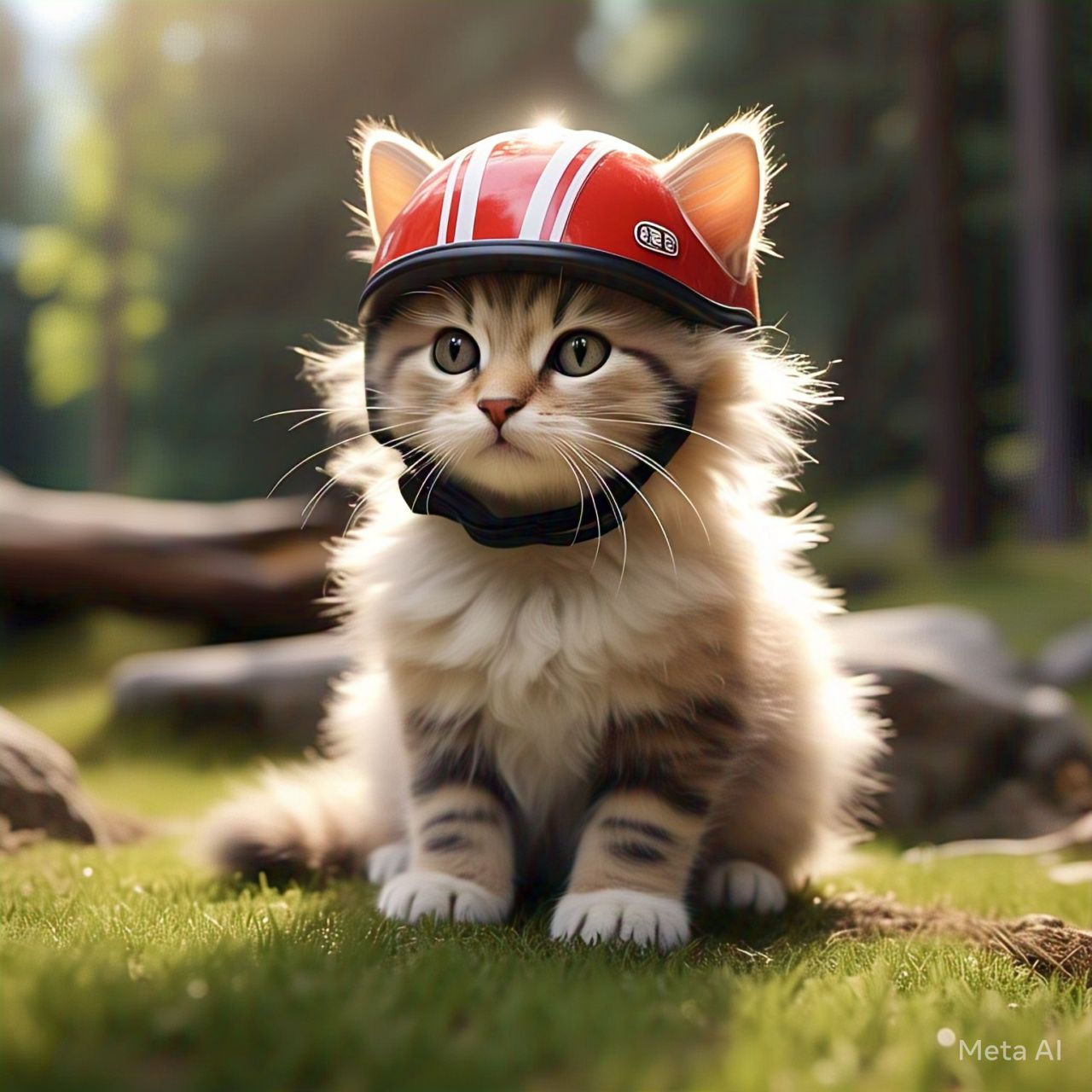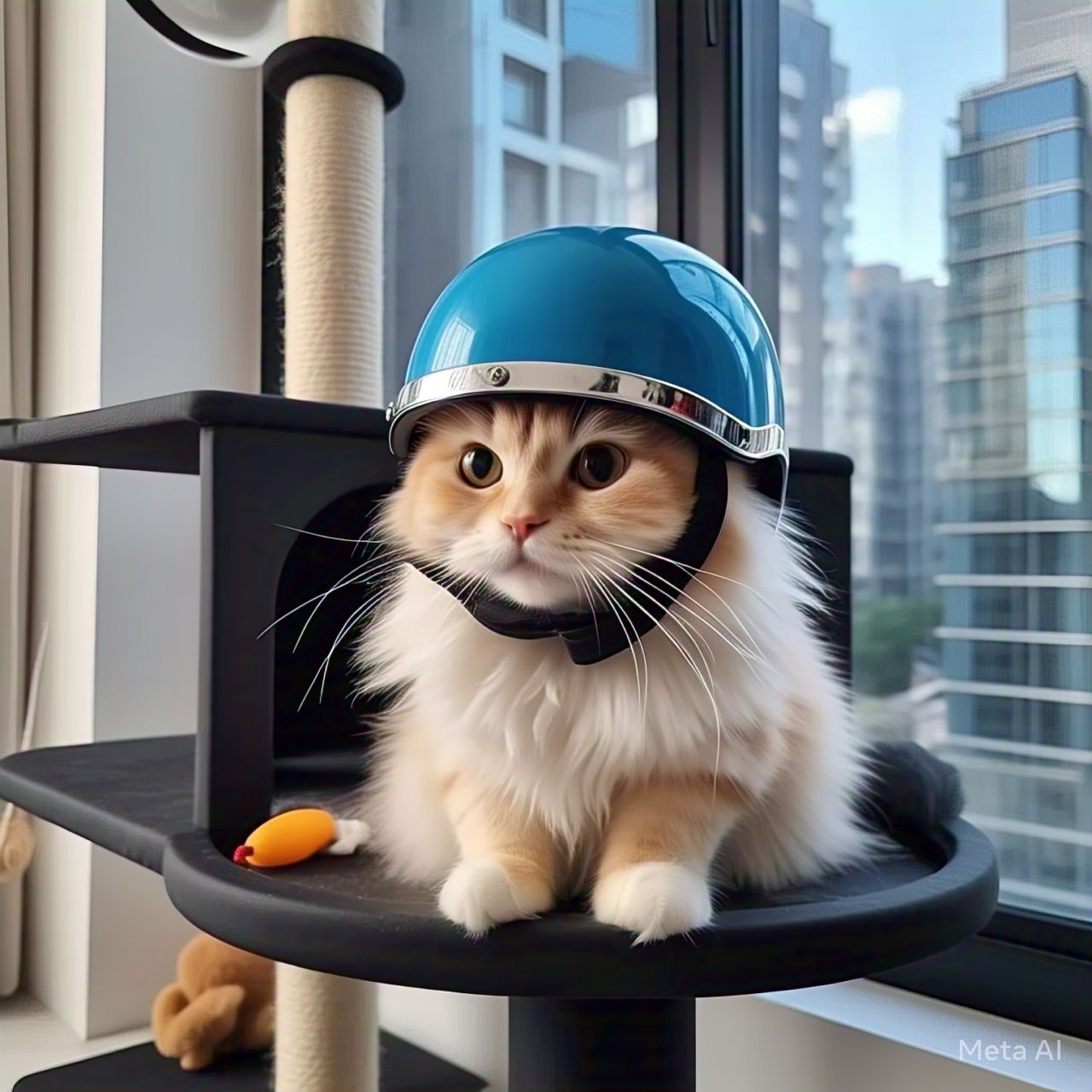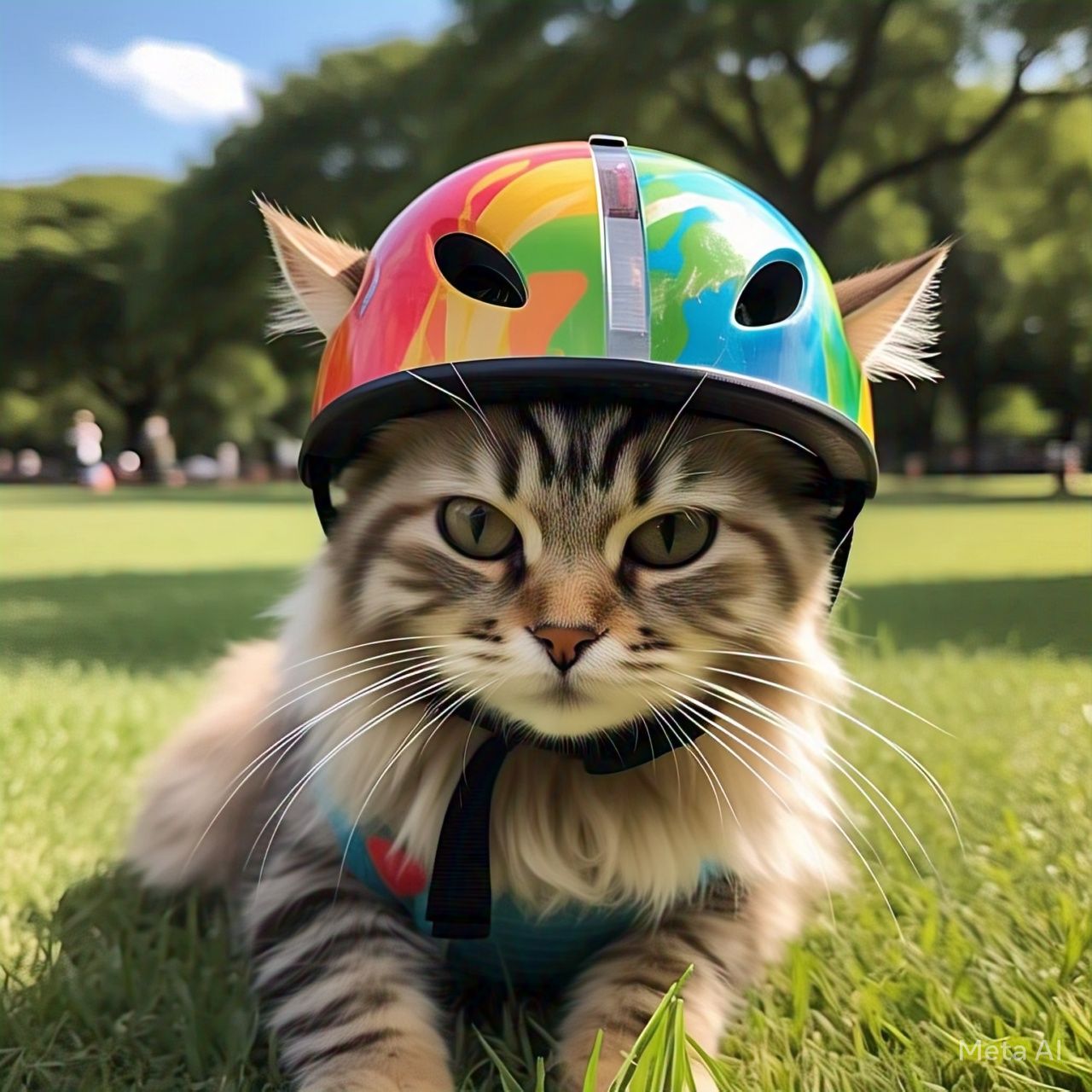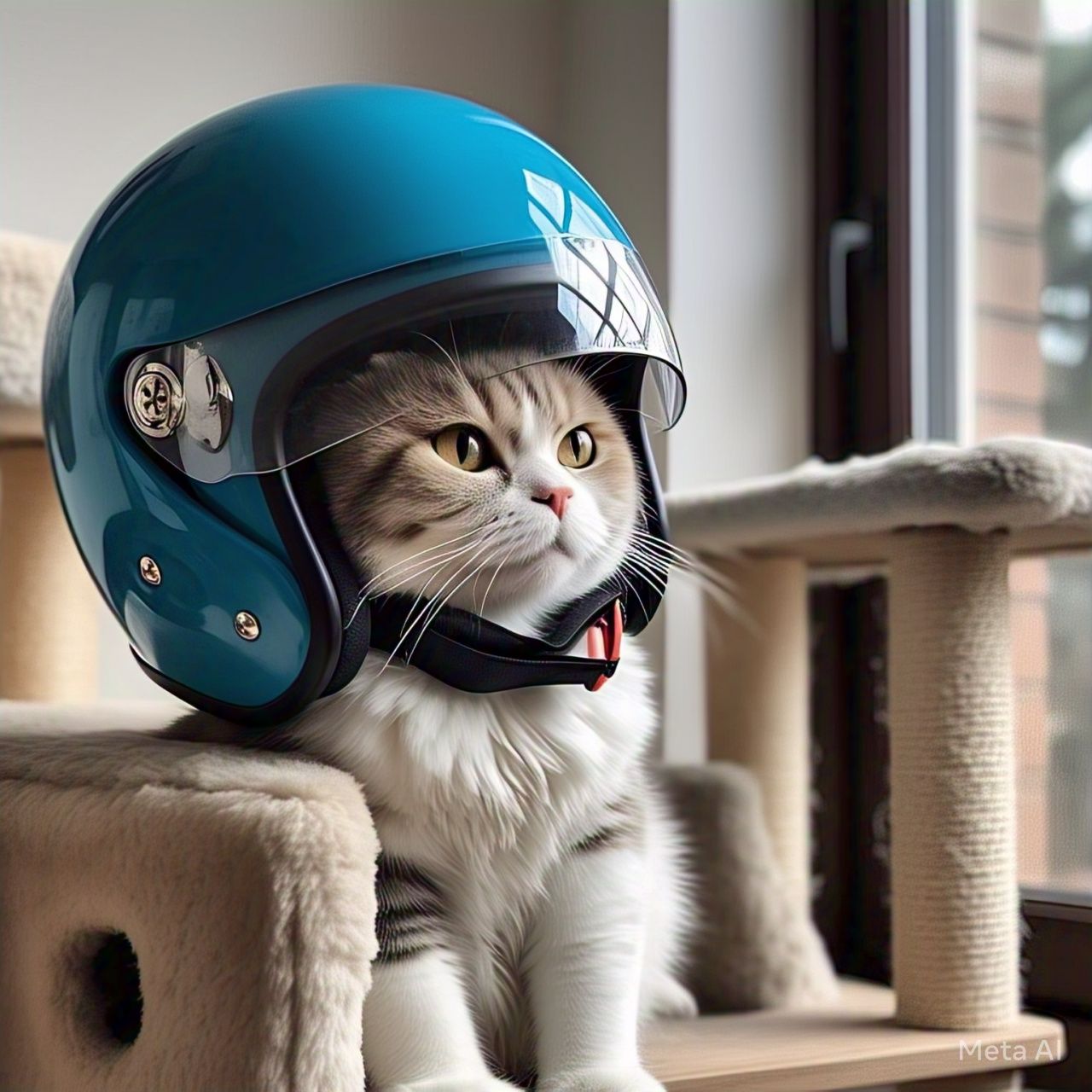The Curious New Trend in Feline Safety
A Surprising Turn in Pet Fashion and Safety
In recent years, pet culture has grown in surprising and sometimes even amusing ways. From luxury pet hotels to social media influencers with paws, animals have become stars in their own right. However, one of the most unexpected new developments in pet care is the rise of protective gear for cats—especially the emergence of cat helmets.
Once seen as a novelty or even a joke, cat helmets are now being taken seriously by a growing number of pet owners. Designed to protect a cat’s head during everyday activities or specific tasks, these helmets come in many forms, from soft, cushioned caps to hard-shelled helmets that resemble miniature versions of what humans wear for biking or construction.
This trend is not just about fashion or fun. It touches on issues of safety, animal welfare, and how people view their relationships with their pets. As more cats are taken outdoors, travel with their owners, or even participate in physical therapy or recovery after injury, the idea of protective gear becomes less odd and more practical.
How the Humanization of Pets Changed Everything
The rise of protective cat gear is closely tied to the humanization of pets. Over the past two decades, people have stopped thinking of cats and dogs simply as animals living in their homes. Instead, pets are increasingly seen as family members—complete with birthday parties, health insurance, and social media accounts.
This shift has changed the way people care for animals. Cat owners now go beyond traditional needs like food, water, and vet visits. They look into ways to improve their pet’s quality of life, emotional well-being, and safety. In this new pet-parenting mindset, products like cat helmets don’t seem quite as silly as they might have twenty years ago.
Many pet owners now worry about the same things for their cats as they would for a child: head injuries during play, falls from high surfaces, or risks during outdoor walks. When a cat is recovering from surgery or dealing with a medical issue that affects balance, a helmet might even be recommended by a vet to prevent further injury. While that is still rare, it reflects how pet care has evolved.
Social Media’s Role in Normalizing Cat Helmets
Another major reason for the popularity of protective gear for cats is the power of social media. Platforms like Instagram, TikTok, and YouTube are full of cat videos—some funny, some cute, and some showcasing remarkable products. Cat helmets first went viral thanks to quirky videos showing felines wearing tiny space helmets or biker-style caps, often paired with humorous music or dramatic effects.
At first, these videos were seen as entertainment. But over time, they started to influence consumer behavior. When viewers saw cats wearing helmets and looking comfortable—or at least tolerant—it made them curious. Could their own cat wear one? Would it help during a car trip or a vet visit? And more importantly, was it safe?
Pet influencers began to test different helmet types and brands. Some even posted tutorials about how to introduce a cat to wearing one without stress. As these posts gained likes and shares, companies saw an opportunity. A small number of brands began to design and sell helmets made specifically for cats. They weren’t just toys or costumes—they were real products with functional features.
The Balance Between Safety and Comfort
As with any trend involving animals, there is a line between cute and cruel. Animal rights groups and veterinarians are quick to speak out when a product seems uncomfortable or unnecessary. That’s why the helmet trend has been met with both interest and caution.
Supporters argue that protective gear, when used properly, can make a difference—especially in rare cases where cats have neurological conditions, balance issues, or healing wounds. However, experts stress that helmets should never be used just for decoration, nor should a cat be forced to wear one for long periods.
Designers of cat helmets are now focusing more on comfort. The best models are lightweight, made with breathable materials, and shaped to fit a cat’s unique head structure. Some include adjustable straps and padding, much like helmets made for small dogs or even toddlers.
Still, many questions remain. How do you know if your cat needs one? Can a cat actually benefit from wearing a helmet, or does it just cause stress? Are there health risks or behavioral changes involved? These questions are at the center of the current conversation.
A Symbol of a Changing Pet World
The rise of protective gear like cat helmets is not just about a single product. It’s a symbol of how deeply pet care has changed in the modern world. Today’s pet owners want to protect their animals from harm in every way possible. Whether it’s an indoor cat who loves to jump onto high furniture or an adventurous feline who enjoys going on hikes with their owner, safety is becoming a major concern.
As more products enter the market, pet owners are faced with new decisions. Is this necessary? Is it ethical? Will my cat actually tolerate this? The answers depend on the individual pet, the product’s design, and how it’s introduced.
But one thing is clear: the trend of cat helmets is not going away anytime soon. What began as a viral joke is slowly turning into a thoughtful discussion about how to keep animals safe in a world designed for humans.
From Working Animals to Fashion Icons – The Evolution of Pet Safety Gear
Early Forms of Animal Protection
Long before the first cat ever wore a helmet on Instagram, humans were already designing gear to protect animals. The earliest examples go back centuries and were created for working animals such as horses, dogs, and even elephants. In medieval times, war horses wore metal armor on their heads and bodies to protect them in battle. These horses were not just transportation—they were fighters, and their protection was seen as necessary.
Dogs were also outfitted for protection, especially in military and law enforcement roles. In the early 20th century, working dogs were given basic forms of protective gear, like padded vests or light helmets, mostly to shield them from debris or injury in dangerous environments. Though these items were often crude, they marked the beginning of a new way of thinking: animals, when doing important jobs, needed the same kind of safety equipment as their human partners.
Cats, on the other hand, were not typically seen as working animals. Their agility and independence kept them out of these roles. As a result, there was little need or demand for protective gear made specifically for cats. This would remain the case until the modern era, when the role of cats in human life started to shift dramatically.
The Shift in Pet Roles in the 20th Century
The 20th century brought huge changes in how people viewed animals. With the rise of urban living and household pets, cats and dogs moved indoors. They became companions more than workers, living alongside humans not just for function but for friendship.
By the mid-1900s, pet ownership had become widespread in the United States and Europe. Families began to treat pets with more care and affection. Veterinarians saw more cases of animals being brought in for checkups, vaccinations, and treatments. With this rise in pet care came the development of pet-specific products, including leashes, toys, and clothing.
Protective gear still wasn’t common at this time, but the groundwork was being laid. The mindset of pet owners was evolving. People were more willing to invest time and money into making sure their pets were safe, happy, and healthy. Though helmets were still not on the radar for cats, protective gear for dogs—like booties for snow or reflective vests for night walks—began to appear more frequently in stores.
The Role of Veterinary Medicine in Protective Design
Veterinary medicine has played a quiet but important role in the rise of protective gear for pets. In many ways, the first modern examples of pet helmets and similar gear came not from the world of consumer goods but from clinics and animal hospitals.
When a cat or dog suffered a head injury or underwent surgery, veterinarians sometimes used makeshift protective coverings to help the animal heal safely. These were often custom-made using soft foam, bandages, or medical-grade plastic. While these early attempts weren’t pretty, they were functional. They helped protect wounds, stabilize the head, and prevent the animal from making injuries worse by scratching or rubbing.
These practical uses showed that protective gear for animals could serve a real medical purpose. Over time, some of these ideas inspired companies to create more permanent, wearable solutions that could be sold to consumers. Some veterinarians even partnered with designers to create products that combined medical knowledge with modern materials and aesthetics.
Influence of the Pet Fashion Industry
While medical needs pushed the functional side of animal gear forward, the fashion industry helped popularize it. Beginning in the late 1990s and early 2000s, pet fashion exploded in popularity. Small dogs, in particular, were dressed in outfits, booties, and even sunglasses. Celebrities were often photographed carrying pets in designer bags, turning animals into accessories as well as companions.
Cats were slower to enter this space, mostly due to their independent nature. However, some cat owners began experimenting with outfits and costumes for photos. What started as playful dress-up for holidays or parties eventually turned into a niche market for cat-friendly clothing and accessories.
As this fashion world grew, it slowly merged with functional gear. Some outfits were designed not just to be cute but to serve a purpose. Jackets included reflective strips for safety, and collars were made with breakaway clasps to prevent choking. This blending of fashion and safety laid the foundation for more complex items—like helmets.
Rise of Protective Gear for Outdoor Adventures
The popularity of “adventure pets” is another key piece of this puzzle. In recent years, more people have started taking their cats outdoors. From hiking trails to bike rides, these outings require special gear. Cats are now seen in harnesses, backpacks, and even goggles to protect their eyes from wind or debris.
In this setting, the idea of a cat helmet makes more sense. Cats who go on motorcycle rides, accompany their owners on outdoor treks, or travel frequently in cars may benefit from head protection. These activities are riskier than lounging indoors, and owners who take their pets into these environments are often willing to invest in extra gear.
This sense of adventure and exploration has changed what pet gear looks like. It’s no longer just about style or recovery—it’s about preparing animals for different environments and reducing risk. Helmet use among cats, while still rare, is slowly becoming part of this conversation.
Technology and Materials Make It Possible
One reason the cat helmet trend is gaining traction today is because of advancements in materials and technology. In the past, helmets were bulky, uncomfortable, and heavy. That kind of gear would never work on a cat. But today’s designers have access to lightweight plastics, memory foam, breathable fabrics, and 3D printing. These tools make it possible to create protective headgear that is light enough for a cat to wear, yet strong enough to provide basic safety.
Some companies have gone a step further, designing helmets that are custom-fit to a cat’s head using 3D scanning. Others focus on flexible designs that mold to the animal’s head shape without pressing too hard on sensitive areas. These details make a big difference in comfort and usability.
Technology also allows for more testing. Designers can now measure how well a helmet protects against impact or fits around a cat’s ears and whiskers. These changes make the gear safer and more appealing to cautious pet owners.
Cultural Shifts in Pet Parenting
Behind all these changes is a cultural shift in what it means to care for a pet. The idea of “pet parenting” has become common, replacing old ideas of ownership with a deeper emotional bond. People are more likely to see pets as children than as animals. This shift influences every part of pet care—from the food people buy to the medical treatments they pursue.
In this new cultural environment, spending money on safety gear like a helmet no longer seems excessive. Instead, it feels responsible, even loving. The same way a parent buys a helmet for a child riding a bike, a cat owner may now consider buying one for a feline who rides in a backpack or travels often in a car.
This emotional bond is powerful. It leads people to seek out products that offer peace of mind. Whether or not the cat truly needs a helmet, the owner may feel better knowing they’ve taken an extra step to keep their pet safe. This emotional motivation is one of the biggest drivers of the trend.
The Future of Pet Safety Gear
Looking back, it’s clear that the path to the modern cat helmet has been shaped by many factors: history, medicine, fashion, adventure, technology, and culture. Each played a role in bringing protective gear into the world of pet care.
While some still view cat helmets as a gimmick, others see them as the next step in a growing effort to treat pets with the same care given to human loved ones. As more research is done, and as more companies enter the market, these products will likely become more advanced and widely accepted.
The Modern Cat Helmet Market – Designs, Buyers, and Real-Life Use
The Growth of a Niche Market
Not long ago, the idea of buying a helmet for a cat would have seemed unnecessary or even ridiculous to most people. But today, a growing number of pet owners are taking this idea seriously. As pet safety and comfort become more important, the market for protective gear—especially cat helmets—is slowly growing from a niche novelty into a specialized product category.
This shift didn’t happen overnight. It was driven by several trends coming together at once: the rise of pet influencers, growing interest in adventure pets, and increasing awareness of animal health and safety. As more people began to see cats as active companions instead of quiet house pets, they also began to search for products that could help keep those companions safe during new kinds of activities.
Companies took notice. In just a few years, the market has gone from a handful of humorous costume-style helmets to a variety of well-designed protective products. These helmets now come in different materials, shapes, and purposes—ranging from fashion statements to functional head protection.
Types of Cat Helmets on the Market
The current selection of cat helmets includes several different categories, each designed with a specific user or use case in mind. At one end of the spectrum are helmets made primarily for visual impact. These are often sold as costume accessories, made from plastic or rubber, and styled to look like space helmets, motorcycle gear, or even sports equipment. While they can be amusing and cute, they usually offer very little real protection and are best used under supervision or for short periods during play or photo sessions.
On the more serious end of the spectrum are helmets designed with function and safety in mind. These helmets are typically made from durable yet lightweight materials such as EVA foam, polycarbonate shells, or soft-padded mesh. They are shaped to fit a cat’s skull and feature adjustable straps to help ensure a snug but gentle fit. Some include extra padding to cushion the head in case of a fall or bump.
There is also a small but growing market for therapeutic helmets. These are intended for cats recovering from neurological issues, head trauma, or surgery. These helmets are often recommended by veterinarians and are designed to protect vulnerable areas during healing. They tend to be custom-fit or come in specialized sizes and shapes for specific medical needs.
Who Is Buying Cat Helmets Today?
The market for cat helmets remains relatively small compared to more common pet products, but it is growing steadily. The buyers fall into a few clear categories, each with their own reasons for exploring this unusual gear.
First, there are the trend-followers. These cat owners are drawn in by social media posts and viral videos. They may buy a helmet to take part in a trend, dress up their pet for photos, or add something unique to their cat’s collection of accessories. For them, the helmet is often more about fun and self-expression than function.
Second, there are the adventure seekers. This group includes pet owners who take their cats hiking, biking, or traveling frequently. They are concerned about the risks that come with those activities and may look for gear that adds a layer of protection. For these owners, a helmet is part of a larger safety kit that might also include a harness, GPS tracker, and travel backpack.
A third group consists of pet owners dealing with special medical or behavioral needs. Some cats have conditions that make them more likely to fall or bump into things. Others may be recovering from surgery or have sensory disorders. In these cases, the helmet is not a toy—it’s a tool. These buyers are usually more selective and careful about the products they choose, often relying on recommendations from veterinarians or animal therapists.
Lastly, there are the innovators and testers—people who simply enjoy trying new things and pushing boundaries in the pet world. They may experiment with gear like helmets out of curiosity, a desire to be early adopters, or a genuine belief that they are helping their pets live better lives.
Where Cat Helmets Are Sold
Although not yet common in big-box pet stores, cat helmets are widely available online. E-commerce platforms like Etsy, Amazon, and Chewy offer a variety of models, ranging from decorative to medically approved. Many helmet makers sell directly through their own websites, often offering custom designs or specialty sizing.
Some helmets are even handmade, especially the ones sold on platforms like Etsy. These often have a crafty or artistic edge, with some creators offering custom colors, themes, and names printed on the helmets. While handmade options may be more stylish, they may not meet any safety standards.
More functional and medical-grade helmets are typically found through specialty pet gear companies or recommended by veterinary professionals. These are more expensive and are often marketed as part of a broader health or recovery plan.
How Much Cat Helmets Cost
Cat helmets vary widely in price depending on the purpose, material, and brand. Decorative or costume-style helmets usually cost between $10 and $30. These are often made from soft plastic or rubber and are not designed to offer real protection. They’re light, easy to wear briefly, and primarily serve an entertainment or fashion purpose.
Protective helmets designed for actual impact resistance or medical use are more expensive. These products often range from $40 to over $100, depending on their features. High-quality therapeutic helmets, which may include custom fitting, memory foam padding, or vet-approved designs, can cost even more.
Buyers also have to consider additional costs such as shipping, fitting accessories, and in some cases, replacement parts like straps or liners. Some brands offer subscription models or product warranties, but these are still uncommon.
The Challenges of Helmet Use
Despite the rise in popularity, putting a helmet on a cat is not always easy. Cats are known for being particular about what they tolerate on their bodies. Unlike dogs, who are often trained to wear harnesses or vests from a young age, many cats resist anything that feels restrictive or unfamiliar.
This means that successful helmet use usually requires patience, training, and a gentle introduction process. Experts suggest starting with short wear periods, positive reinforcement, and careful observation of the cat’s behavior. If a cat shows signs of stress, discomfort, or fear, the helmet should be removed immediately.
There are also concerns about overheating. Cats regulate their temperature through their head and ears, so helmets need to be breathable and worn only for short periods unless medically advised. This is why good design—lightweight materials, adjustable fits, and ventilation—is crucial.
What Vets and Behaviorists Say
Veterinarians and animal behaviorists remain somewhat cautious about cat helmets. Most do not recommend them for everyday use unless there is a specific need. However, in cases where helmets serve a medical or safety purpose, professionals are more likely to support their use.
Some vets see potential benefits in helmets designed for cats recovering from neurological injuries or surgeries. In those cases, head protection can prevent re-injury or offer comfort during the healing process. Still, they stress that any helmet must be used under supervision and fit the animal properly.
Behaviorists warn that forcing cats to wear unfamiliar gear can lead to anxiety or behavioral problems. They recommend introducing gear slowly and using positive reinforcement to make the process more comfortable. Understanding the individual cat’s tolerance is key.
The Role of Reviews and Influencers
Product reviews and influencer testimonials play a big role in how cat helmets are perceived. On platforms like YouTube and TikTok, cat owners post videos showing how they train their pets to wear helmets, share unboxing experiences, and compare different brands.
These reviews often highlight important details—like whether the helmet stays on, if it interferes with the cat’s vision, or how the cat reacts. Some videos are humorous, showing cats reluctantly tolerating the gear. Others are serious, especially when the helmet is used for medical reasons.
Influencers help normalize the trend. When followers see a popular cat influencer using a helmet responsibly, it can change perceptions. It turns the idea from something strange into something aspirational. This can lead to more careful purchases and better understanding of the gear’s purpose.
Real-World Use Cases
There are several real-life situations where cat helmets have made a meaningful difference. One story involves a cat named Luna, who suffered a head injury in a car accident. After surgery, Luna’s vet recommended a soft protective helmet to prevent further trauma during her recovery. Her owner credits the helmet with helping Luna heal more safely and comfortably.
Another case features an adventure cat named Rocket, who hikes and bikes with his owner. Rocket wears a custom helmet during outdoor activities, especially in rocky or unpredictable terrain. His owner reports fewer head bumps and says the helmet has given him peace of mind.
These examples show that, when used correctly, helmets can serve more than just a decorative role. They can support recovery, enhance safety, and help cats take part in more adventurous lives.
Looking Toward the Future
The cat helmet market is still in its early stages, but it’s growing steadily. As more companies enter the space and more buyers look for protective solutions, the designs are likely to improve. Features like lightweight smart materials, cooling technology, and even GPS trackers could become part of future helmets.
Cultural Meaning and Ethical Questions – What Cat Helmets Really Say About Us
Beyond Safety: What Helmets Symbolize in Pet Culture
The emergence of protective gear for cats—particularly helmets—may seem like a small trend at first glance. However, as the movement gains attention, it begins to reveal something much deeper about the way people relate to animals today. Cat helmets are not just tools of protection or accessories of style. They represent a shift in human behavior, values, and emotional priorities.
In a world where pets are no longer just animals but full members of the family, the decisions people make about how to care for them are becoming increasingly symbolic. Buying a helmet for a cat is no longer a joke or a one-time novelty; for many, it’s an expression of love, responsibility, and even identity. The gear reflects a desire to offer pets the same level of protection, comfort, and care that one might offer a child.
This cultural shift has been building over the last few decades, but cat helmets illustrate it in a unique and visible way. They blur the lines between animal care, fashion, medicine, and human psychology—raising important questions about how much is too much when it comes to treating pets like people.
Are We Protecting Cats, or Projecting Onto Them?
One of the central ethical debates surrounding cat helmets is the question of projection. In psychology, projection refers to when someone places their own feelings or experiences onto another being. When pet owners buy helmets for their cats, are they truly acting in the animal’s best interest—or are they responding to their own emotional needs?
This question doesn’t have a clear answer, but it’s worth considering. For some owners, buying a helmet brings peace of mind. They believe they’re reducing the risk of injury, even if the actual need for a helmet is limited. In their view, taking extra precautions is a sign of care, not excess.
For others, the choice to dress up their pets—including putting them in helmets—may come more from a desire to entertain, impress, or fit in with a growing online community. In such cases, the focus shifts from the pet’s comfort to the owner’s satisfaction. While not always harmful, this approach risks crossing into a gray area where the animal’s well-being takes a back seat.
This doesn’t mean that buying a helmet is automatically wrong or self-centered. But it does require awareness. Pet owners should constantly ask themselves: Does this improve my cat’s life? Does it serve a purpose my cat can benefit from? Or am I doing it to satisfy my own wants?
The Fine Line Between Love and Over-Humanization
Another important aspect of the helmet debate is the idea of over-humanization. As society becomes more emotionally connected to animals, there is a growing tendency to treat pets exactly like people. On one hand, this has led to major advances in animal welfare, including better medical care, improved diets, and safer products.
On the other hand, it has also created situations where animals are put in roles or situations that don’t match their natural instincts. Some experts worry that dressing pets in clothing or gear meant for humans—even with good intentions—can confuse or stress the animal.
Cat helmets fall into this area of concern. While they are sometimes used for medical recovery or outdoor safety, many are marketed as cute or funny. Owners are encouraged to post photos or videos, sometimes ignoring whether the cat is comfortable or even aware of what’s happening.
The ethical path forward involves balance. If a cat is calm and tolerant, and the helmet is safe, lightweight, and used sparingly, it may not cause harm. But forcing a cat into uncomfortable gear just for amusement crosses a line that responsible pet owners should be careful not to approach.
What the Experts Say About Responsible Use
Veterinarians and animal behaviorists generally agree that any gear worn by a cat must be chosen with caution. Cats are highly sensitive animals, and they don’t tolerate change easily. Forcing them into unfamiliar items, especially on their heads, can lead to stress-related behaviors such as hiding, aggression, or refusal to eat.
This is why most experts recommend that helmets only be used in specific situations. For example, a cat with a medical condition that causes disorientation may benefit from head protection. A cat that travels frequently in a carrier or backpack may be safer wearing a soft helmet. In these cases, the helmet has a clear and direct purpose.
Experts also emphasize the importance of training. Just like a harness or carrier, a helmet should be introduced gradually. The cat should be allowed to explore the item on its own terms, with treats and positive reinforcement used to build a calm association. Owners are encouraged to watch their cat closely and stop the use immediately if signs of distress appear.
Ultimately, responsible helmet use comes down to awareness. If the cat is safe, comfortable, and calm, the gear can serve a helpful role. But if the helmet becomes a source of stress or discomfort, it should not be forced, no matter how cute it may look on camera.
A Mirror to Our Modern Pet Relationships
More than anything else, the helmet trend serves as a mirror—reflecting back how society sees pets and what people expect from their relationships with animals. In previous generations, cats were independent animals who lived on the margins of family life. They caught mice, napped in corners, and mostly took care of themselves.
Today’s cats live a very different life. They sleep on beds, have personalized diets, and visit pet psychologists. They star in viral videos and have thousands of followers. They are emotional support animals, best friends, and in many cases, viewed as family in every way except the legal one.
The rise of cat helmets shows just how far this shift has gone. A product once considered a novelty now represents a larger movement: the desire to make animals safer, healthier, and more integrated into human life. But as with any trend, it raises deeper questions about where the line should be drawn between protection and projection, care and control, love and overreach.
The Future of Pet Gear Ethics
Looking ahead, the conversation about pet helmets—and gear in general—will likely become more nuanced. As more products enter the market, questions will continue to emerge about what’s helpful, what’s harmless, and what’s potentially harmful.
Animal welfare organizations may begin to issue clearer guidelines about the safe and ethical use of gear like helmets. Vets may become more involved in recommending specific products based on individual needs, rather than trends. Brands may focus more on science-backed design, rather than cute or marketable aesthetics.
At the same time, pet owners will need to educate themselves. The decision to buy any kind of pet gear, especially something unusual like a helmet, should be made with thought, care, and understanding of the animal’s experience.
Helmets should not be a requirement for cat ownership. They should be a choice made in special cases, with the animal’s well-being as the top priority. Used properly, they can offer protection, support, and peace of mind. Used poorly, they can add stress, confusion, or even harm.
Conclusion: A Symbol of Love in a Changing World
The rise of protective helmets for cats is more than just a quirky trend. It’s a symbol of how much the world of pet care has evolved. What started as a playful internet moment has grown into a conversation about safety, design, and the emotional bonds between people and their pets.
Whether used for medical recovery, outdoor exploration, or occasional fun, cat helmets now sit at the intersection of love and responsibility. They remind us that the way we care for animals is changing—not only in what we buy for them, but in how we think about their lives, their feelings, and their role in our world.
In the end, the question is not whether a cat should wear a helmet. The real question is: What does this choice say about us—and what kind of relationship do we want to build with the animals we call family?
